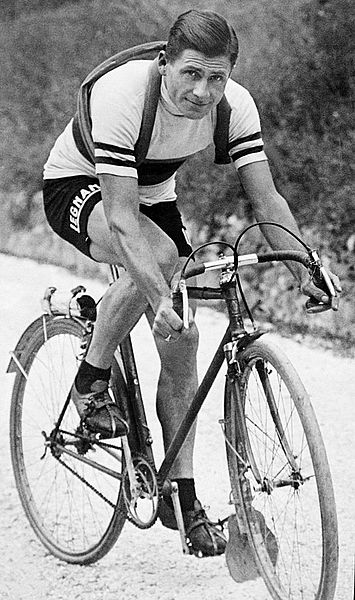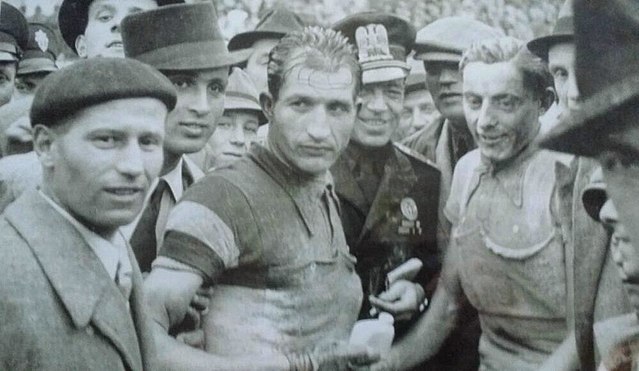The 1912 Giro d'Italia was the fourth edition of the Giro d'Italia, a Grand Tour set up and sponsored by the newspaper La Gazzetta dello Sport. The race began on 19 May in Milan with a stage that stretched 398.8 km (248 mi) to Padua. The race was composed of nine stages that covered a total distance of 2,733.6 km (1,699 mi). The race came to a close in Bergamo on 4 June after a 235 km (146 mi) stage. The race was won by the Atala-Dunlop team that finished with Carlo Galetti, Eberardo Pavesi, and Giovanni Micheletto. Second and third respectively were Peugeot and Gerbi.
Italian Giovanni Micheletto, of Atala-Dunlop, won the opening stage of the race.
The Giro d'Italia is an annual multiple-stage bicycle race primarily held in Italy, while also starting in, or passing through, other countries. The first race was organized in 1909 to increase sales of the newspaper La Gazzetta dello Sport, and the race is still run by a subsidiary of that paper's owner. The race has been held annually since its first edition in 1909, except during the two world wars. As the Giro gained prominence and popularity, the race was lengthened, and the peloton expanded from primarily Italian participation to riders from all over the world. The Giro is a UCI World Tour event, which means that the teams that compete in the race are mostly UCI WorldTeams, with some additional teams invited as 'wild cards'.
Luigi Ganna, the winner of the inaugural Giro d'Italia
Alfredo Binda, winner of five editions of the Giro in the 1920s and 1930s
Fausto Coppi and Gino Bartali
Jacques Anquetil (left) and Felice Gimondi (right, wearing the Maglia Rosa) at the 1967 Giro d'Italia





